Once the capital of Japan, Kyoto is the place to go to experience the cultural and spiritual heart of the country. The city is packed full of so many shrines, temples, palaces and gardens in every direction, it almost seems like they outnumber the 7-Elevens. And that might be true. This makes Kyoto an essential stop on any Japanese itinerary. Unfortunately that also means everyone puts it on their itinerary. And there are a lot of them here.
The sheer number of historical sites of interest has the offsetting effect of spreading the visitors out across many different locations, but for some of the real standout attractions, the best thing to do with these is try to go really early or late in the day to avoid the big tour groups that unload by the bus-load. And then just hope for the best!
Make no mistake, there is a lot to see and do in Kyoto. It’s not a big city by modern standards, but the sheer number of things to see means it’s impossible to see it all in one visit. We spent four full days sightseeing and still left a lot for future visits. The best advice we can offer is to see to major things (despite the crowds, they really are that that good) and then do a bit of research into the rest to find those that are of particular interest to you, otherwise temple-fatigue will set in.
The Visitor Centre inside the main Kyoto JR Station has some very useful cheat sheets with practical information on bus and train routes between the major sites. For first time visitors this is very useful until you start to get your bearings and a sense of scale of the distances on a map.
Tenryu-ji Temple
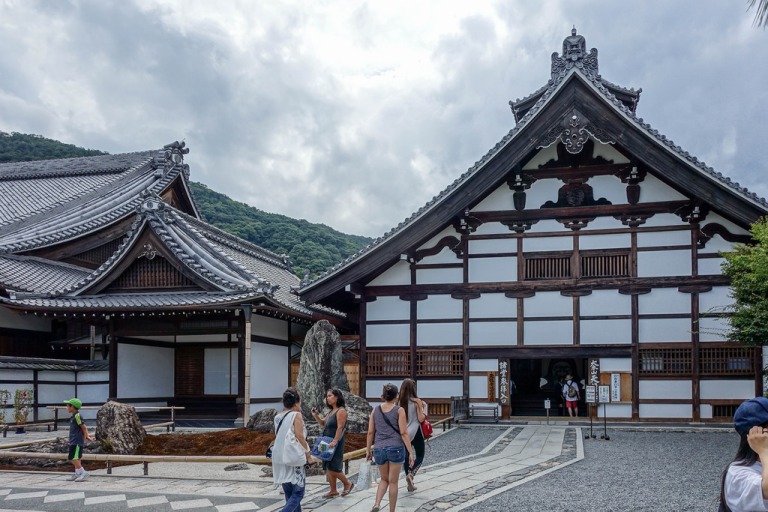
In the west of the city, this temple was originally built in 1255 as a palace before being converted into a Zen temple in 1339. Not that we would have known, but it has a typical layout arranged in a single straight line, and remains as one of the Kyoto’s five Zen temples. The buildings were destroyed eight times over in fires and wars and most of the current structure dates from the Meiji Period (1868-1912). Tenryu-ji means Temple of the Heavenly Dragon, and there is a ceiling painting of a dragon amongst the clouds in the Lecture Hall at the centre of the grounds.
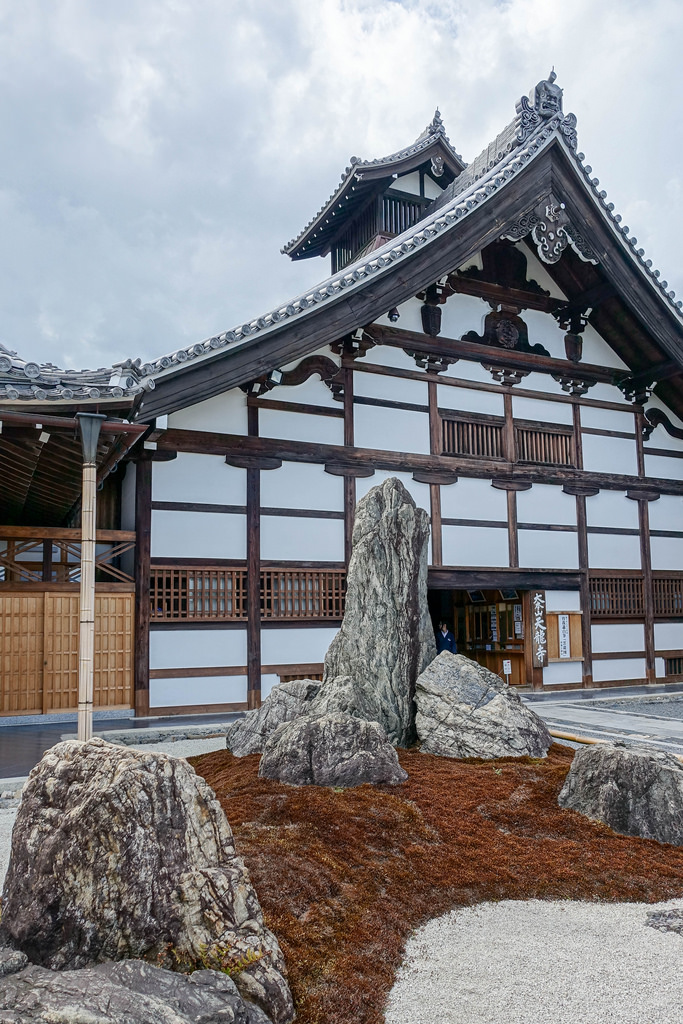

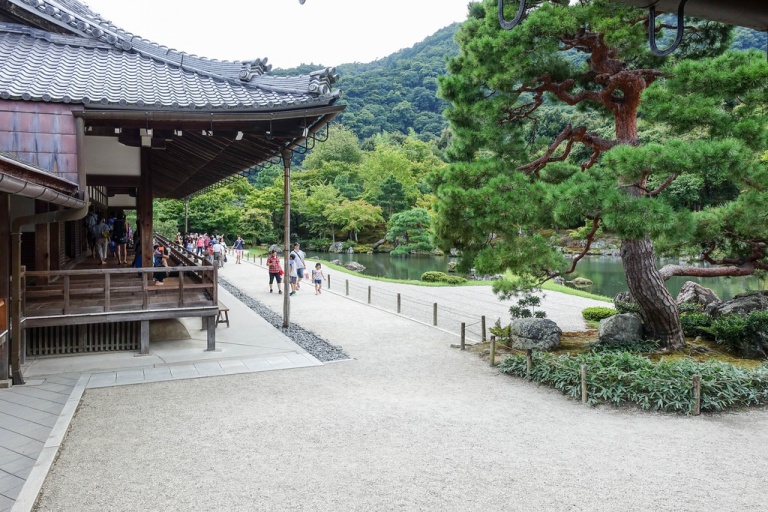
One of the noteworthy features of this temple is its landscape garden built around a pond 700 years ago which retains its original appearance. It is a “Strolling Pond” garden that uses the natural contours of the landscape and the hills in the background to represent mountains. It is the oldest surviving example of shakkei (borrowed scenery) technique that incorporates the surrounding hills into the design. The effect is the appearance of a three-dimensional artwork. (Read more about the different styles and components of Japanese gardens from our visit to Kenroku-en in Kanazawa)

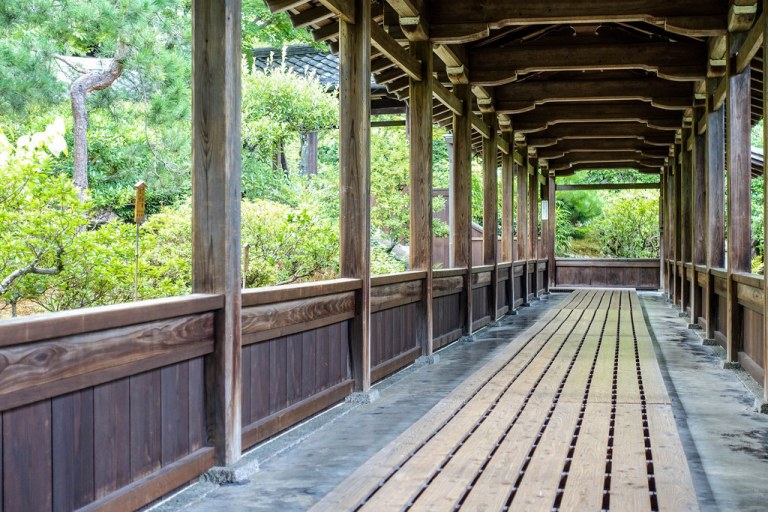
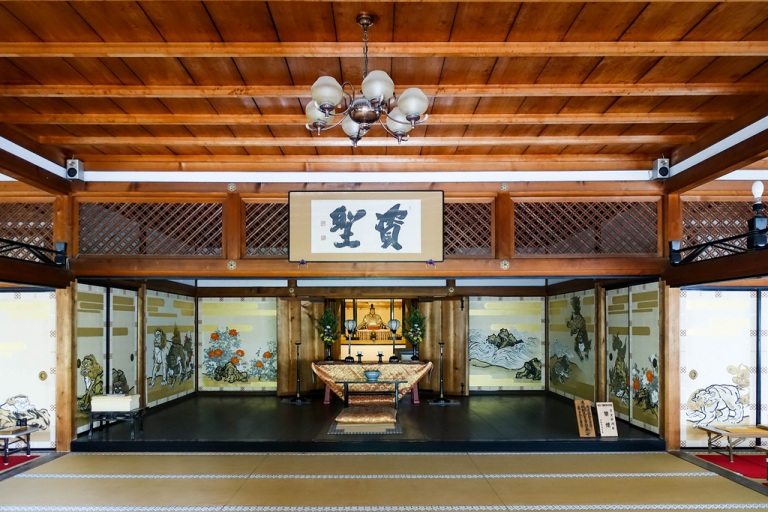

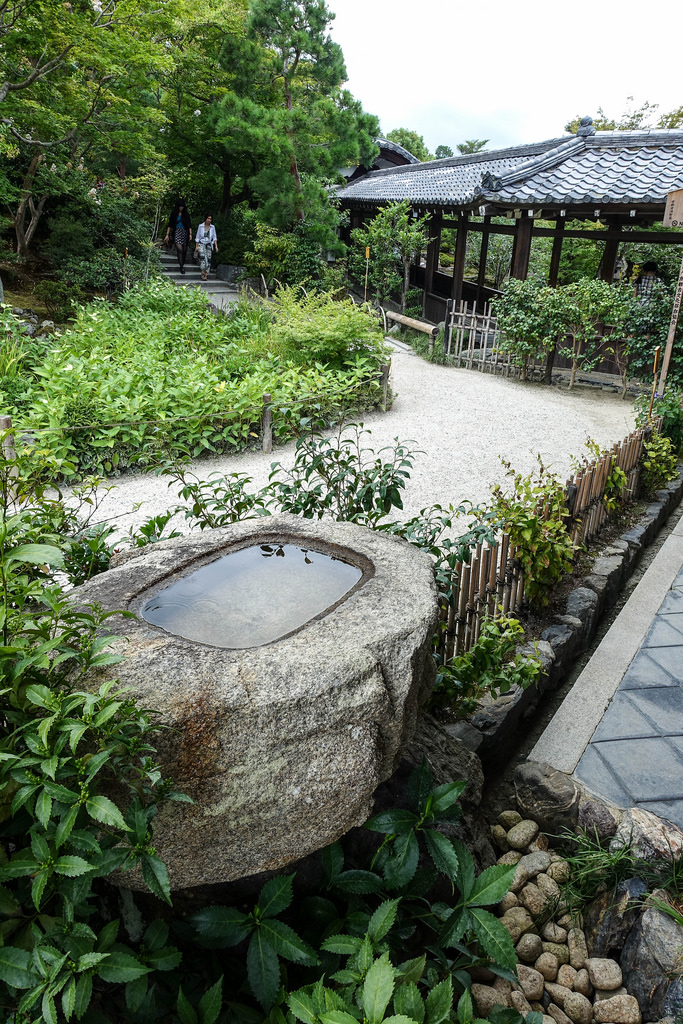
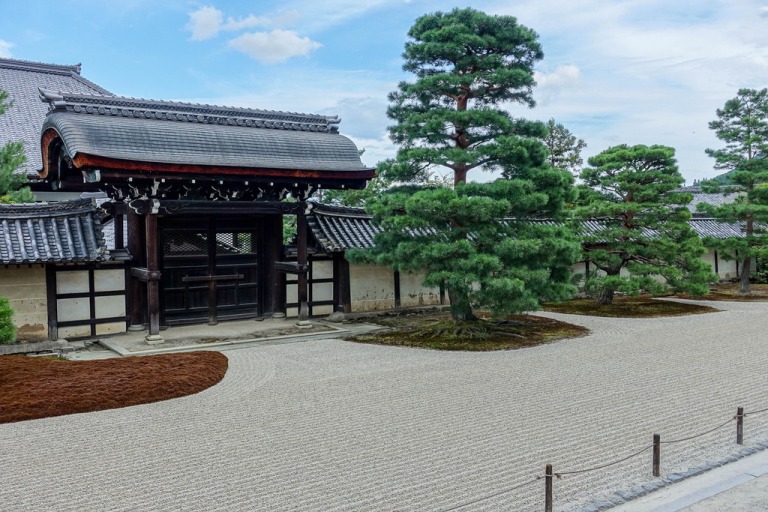

Tenryu-ji was an interesting first temple to visit. Not the most impressive in terms of the buildings, but the garden was very nice and the overall combination lives up to that mental picture most people would have of a Japanese Zen temple and garden.
We headed back across town to Fushimi Inari Taisha. This is the big daddy of places to visit in Kyoto, a fact the manager of this convenience store next to the train station is clearly aware of selling drinks on hot summer days.
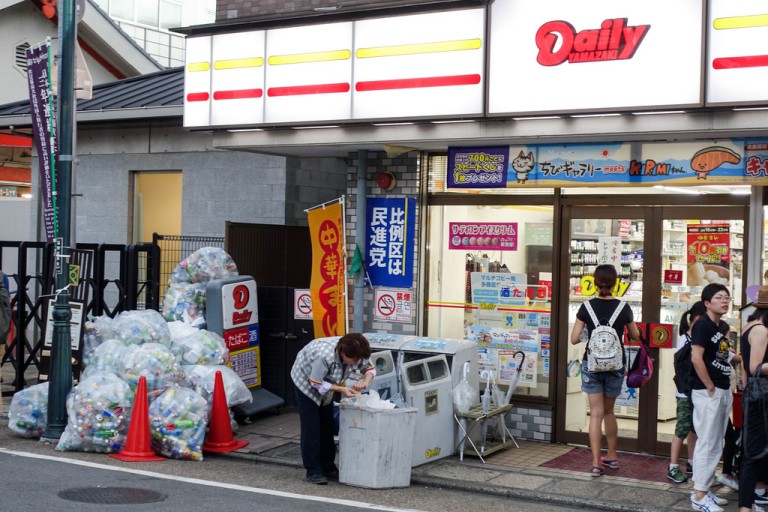
Fushimi Inari Taisha Shrine
According to 17,000+ reviewers on TripAdvisor, this is the #1 thing to do in Kyoto (over 1,230 other things). And when you see it for yourself, you can see why.
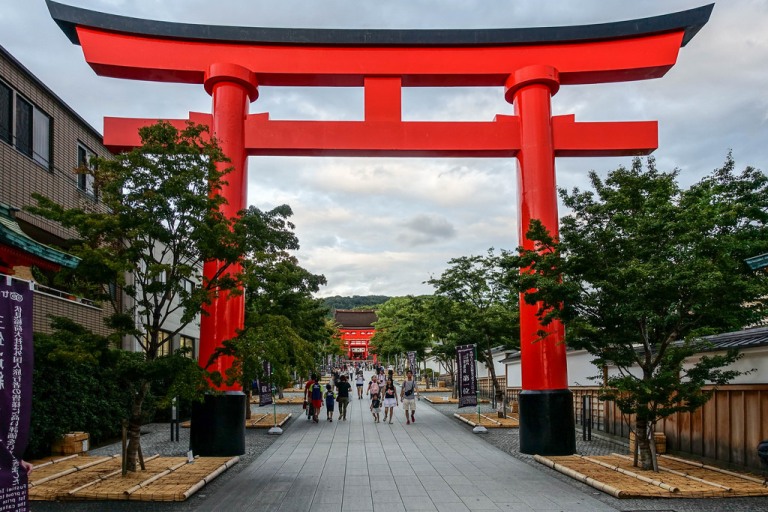

Surprisingly this is one shrine that, for whatever reason, isn’t included as a UNESCO site. Who knows what the exact selection criteria are, but the average person can’t fail to be impressed by this place.

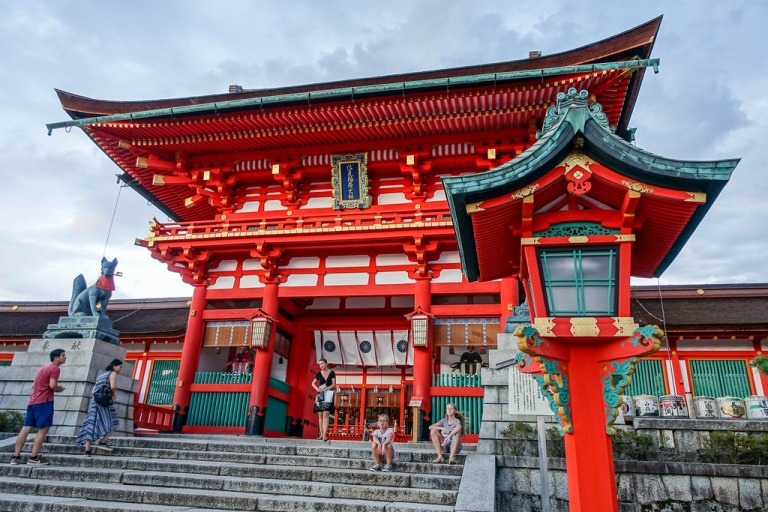
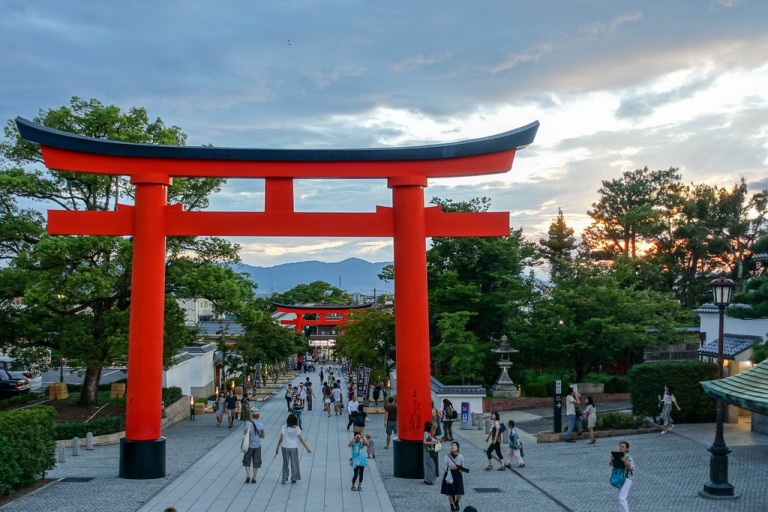
This is the site of the quintessential stock photos of Kyoto: a pathway turned into a tunnel of tightly packed Torii gates. But what isn’t apparent until you get here, is just how long the path is and how many Torii gates line it.
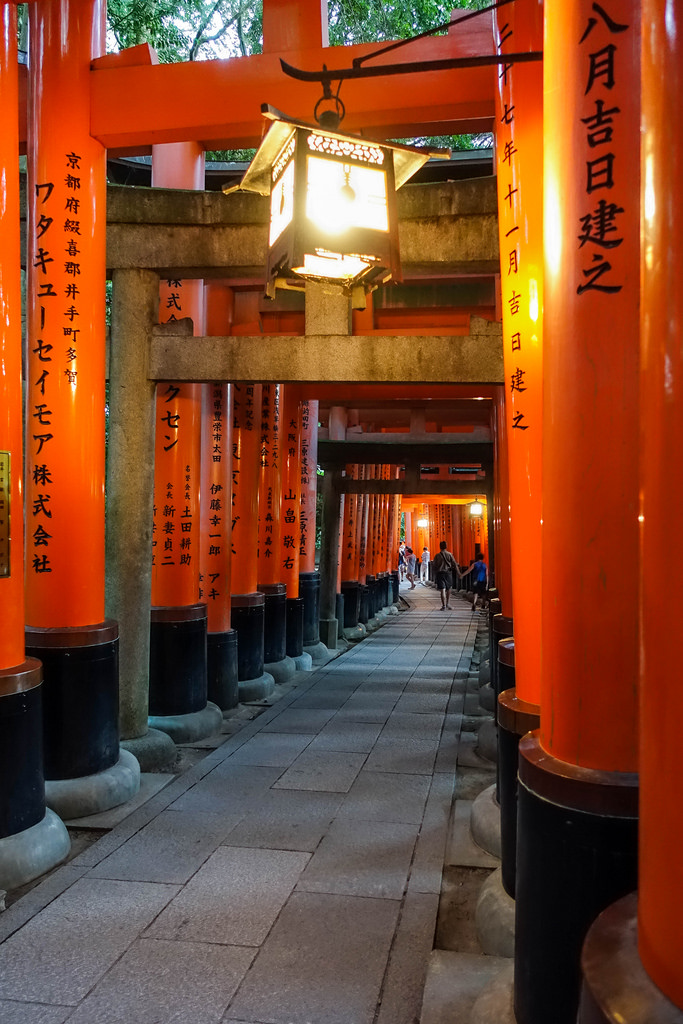



Still going on…
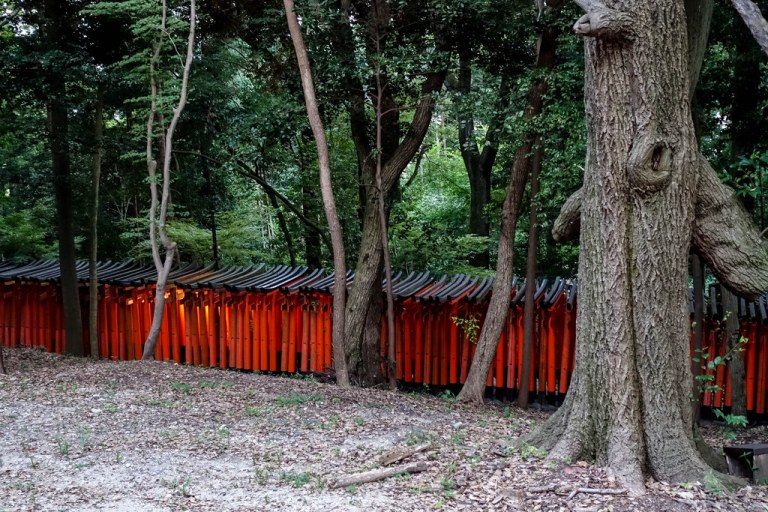
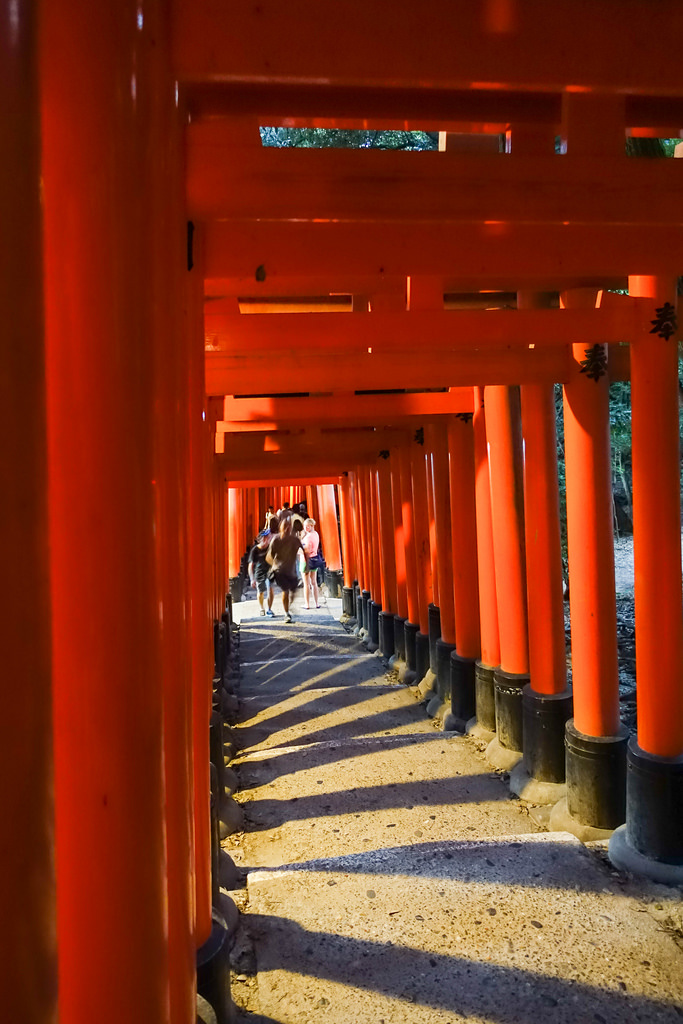
…and on…..
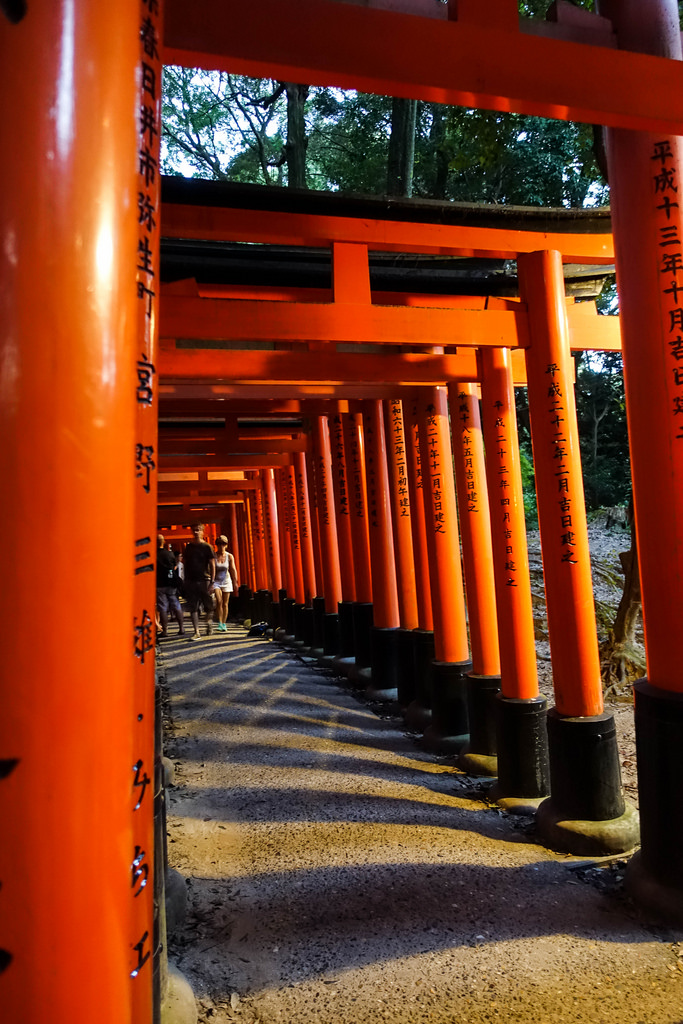
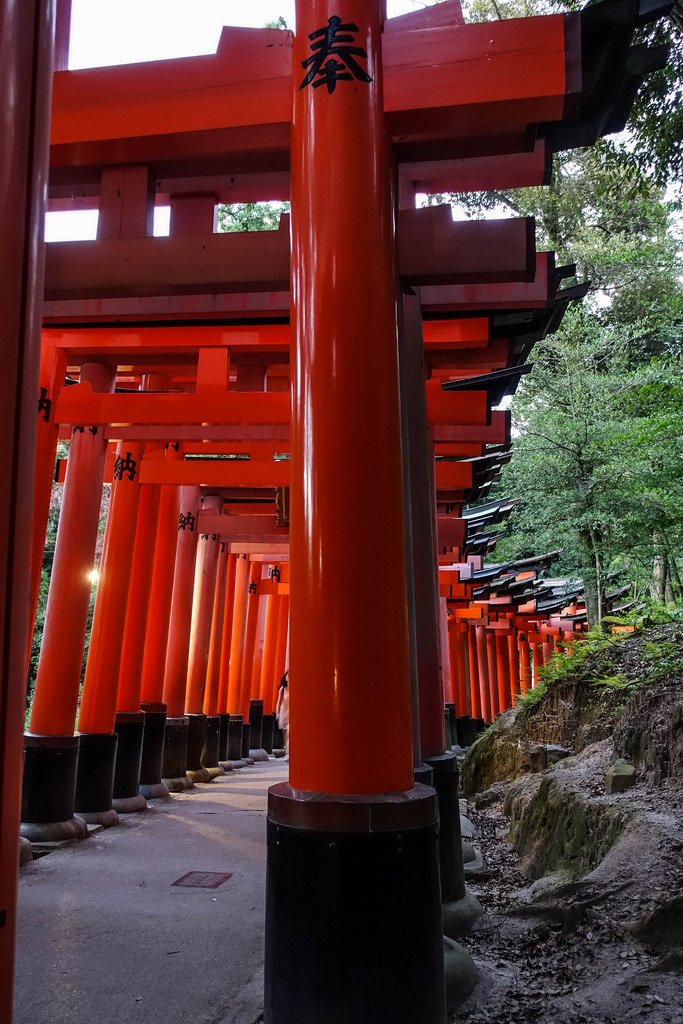
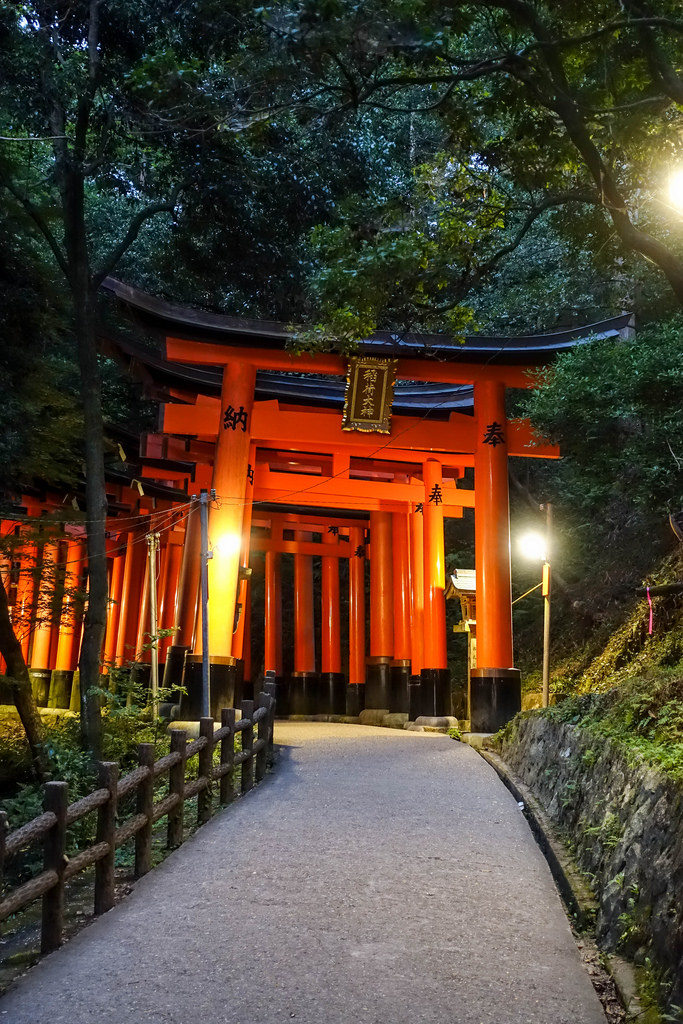
And still further…

We followed the path for the best part of an hour, winding along, ever higher up the Inari mountain. The maps along the way aren’t to scale, so it’s difficult to know just how far away you are from the top and bottom at any point. It was starting to get dark, and not wanting to get lost on the return route as we started encountering forks and intersections in the path, we turned around after about an hour of walking. Apparently the full path to the shrine at the top is 4 kilometres long and takes 2 hours to walk up.
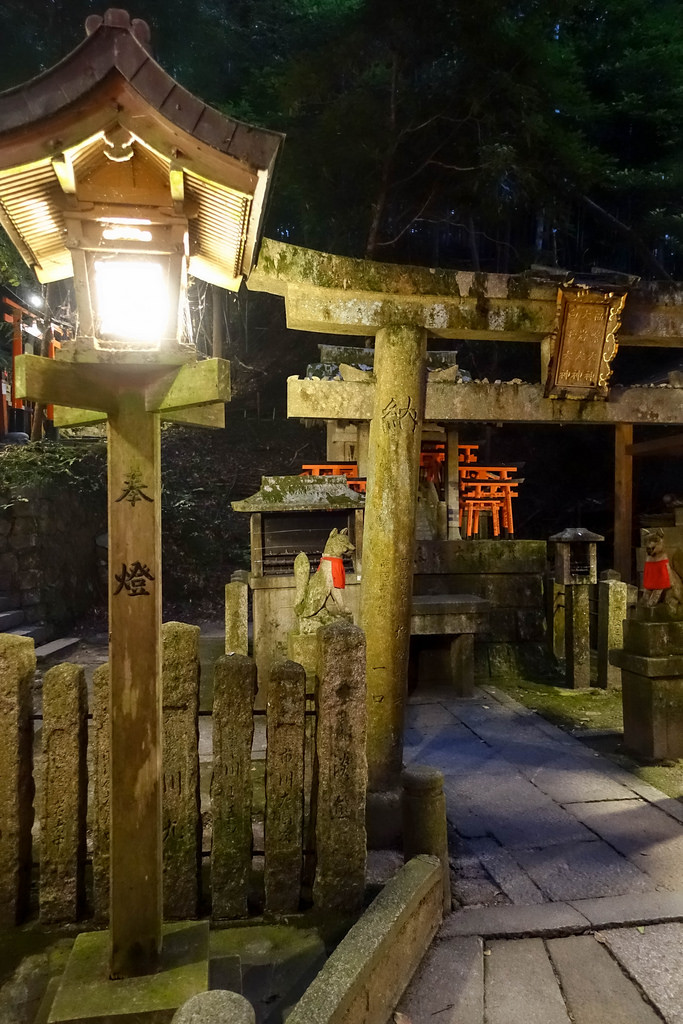
Along the way there are a countless small shrines intended for private worship.


Foxes are an important emblem in Inari shrines where they are regarded as messengers.
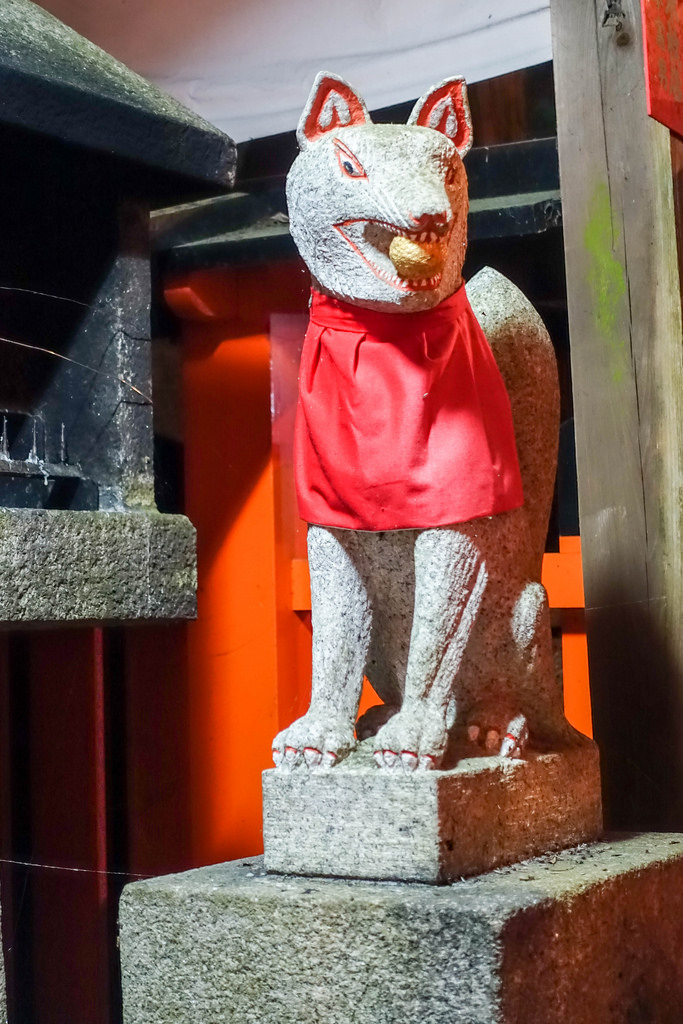
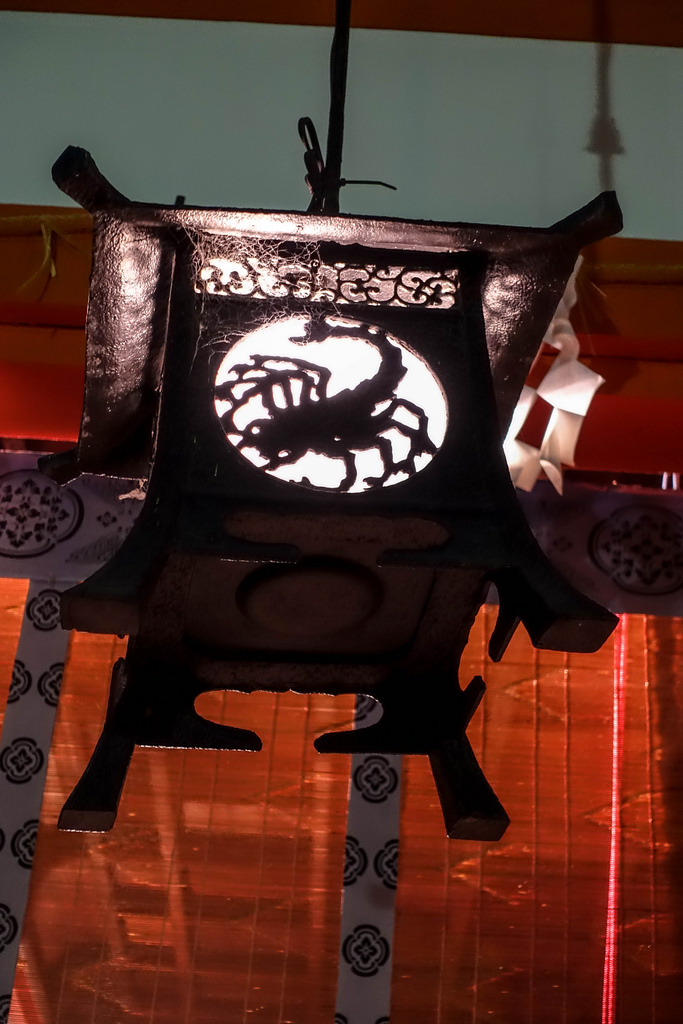
The whole shrine complex took on a very different feel after dark when the crowds had left. This was a much calmer and more enjoyable time of day to visit. Makes you wish all of Kyoto’s attractions could be visited through the night like this one.
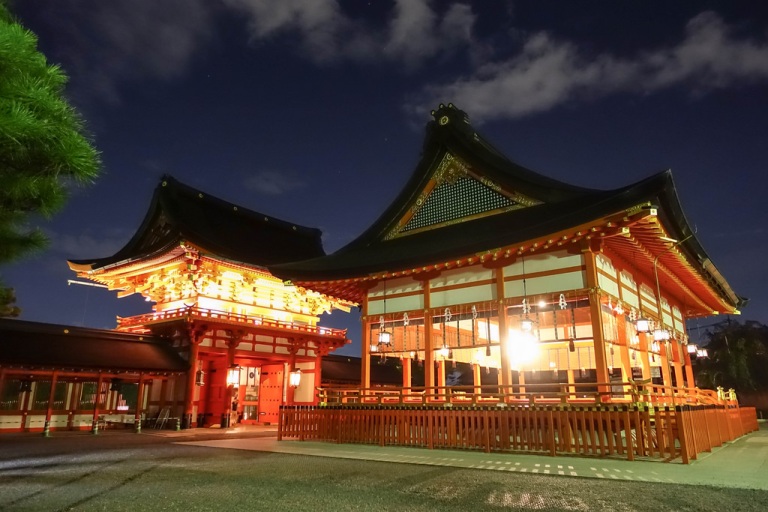
Kinkaku-ji (Temple of the Golden Pavilion)
Though officially named Rokuon-ji, the Temple of the Golden Pavilion is one of the most-visited temples in Kyoto and high on the hit list of the big foreign tour groups. Its image is one of the iconic photographs of Japan and is famous around the world.
It was originally built as an aristocrat’s country estate, who willed that upon his death it be turned into a Zen temple. The second and third floors are gilded in gold leaf, giving the temple its unofficial name. The three story structure is unusual in that it combines 3 different styles in one building. The ground floor is built in the aristocratic style of unpainted wood and white plaster, with shutters that open onto verandas. The second and third floors represent the samurai and Zen styles
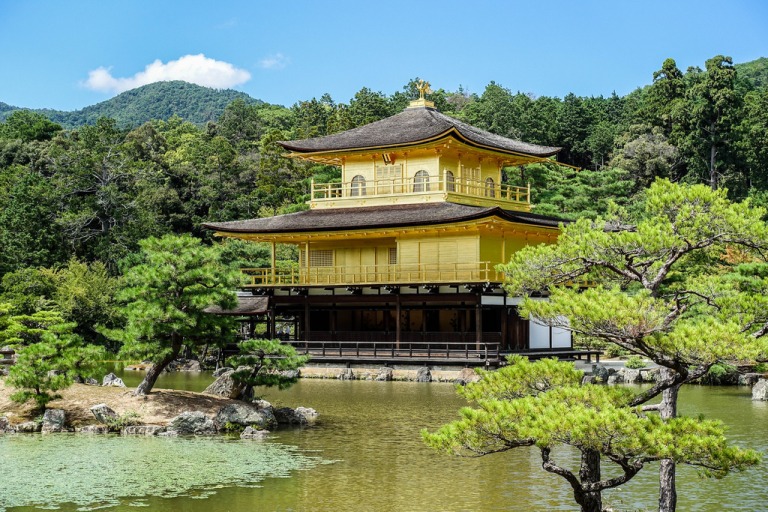
The garden was designed to incorporate the ‘borrowed scenery’ of Mt Kinugasa in the distance to extend the depth of the scene. Specially selected rocks were installed around 10 small islands in the pond.

An under-publicised fact is the temple was burned to the ground in 1950 by a novice monk, and what we see now is an exact reproduction of the original that was completed in 1955.
Ryoan-ji Temple
This temple also started out as an aristocrat’s country villa before being converted into a Zen temple. This temple still has some of the original structures dating back to the 1600’s, including the main hall of the temple.
The temple garden is the standout feature that it is most famous for, thought to date from the mid-15th century. It’s a rock and gravel garden consisting of 15 rocks arranged in 5 groupings on a bed of white gravel. Amongst those in the know, it’s considered to be the finest example of “karesansui” or dry landscape style rock garden, throughout the world.
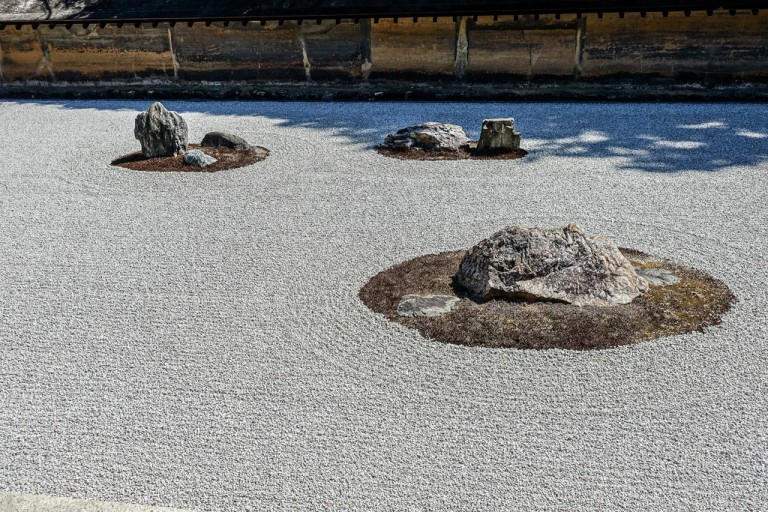
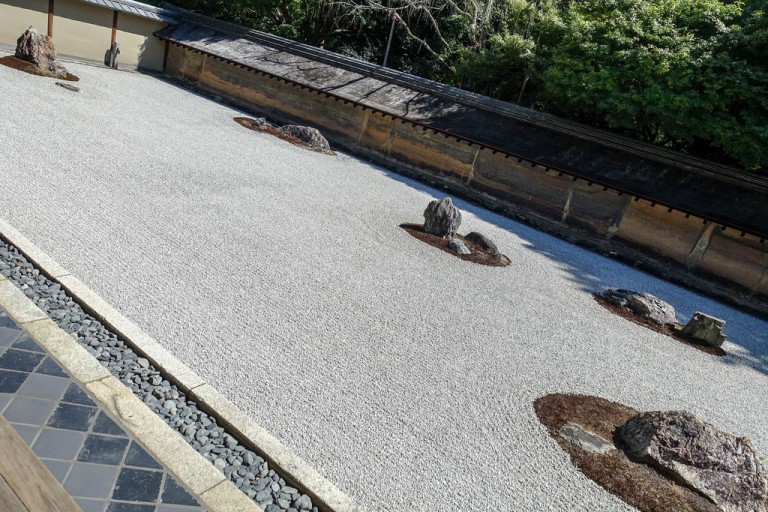

It is very minimalist, but is this the best example of a “dry landscape garden” in the world? Clearly I know nothing about gardening.
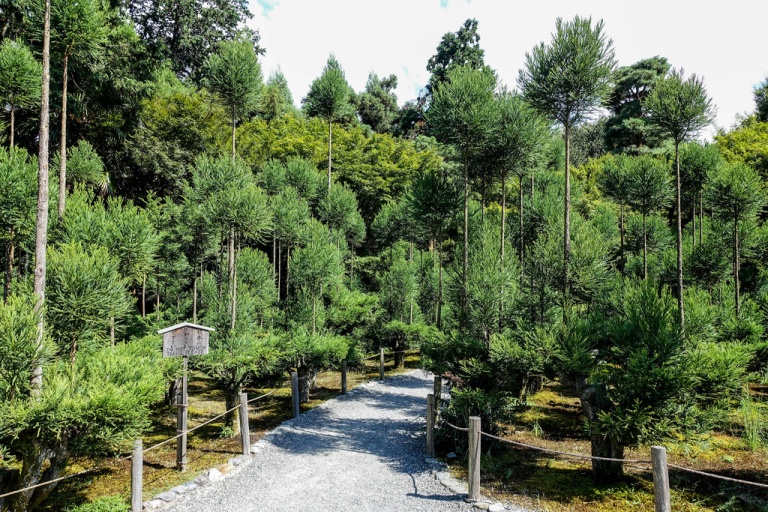
Ninna-ji Temple
This is the third of the three neighbouring temples in northwest Kyoto. It was founded in 888AD so has one of the longest histories. Entrance to the temple is through a massive gate – one of the largest of its kind in Japan – with two fierce-looking guardians.
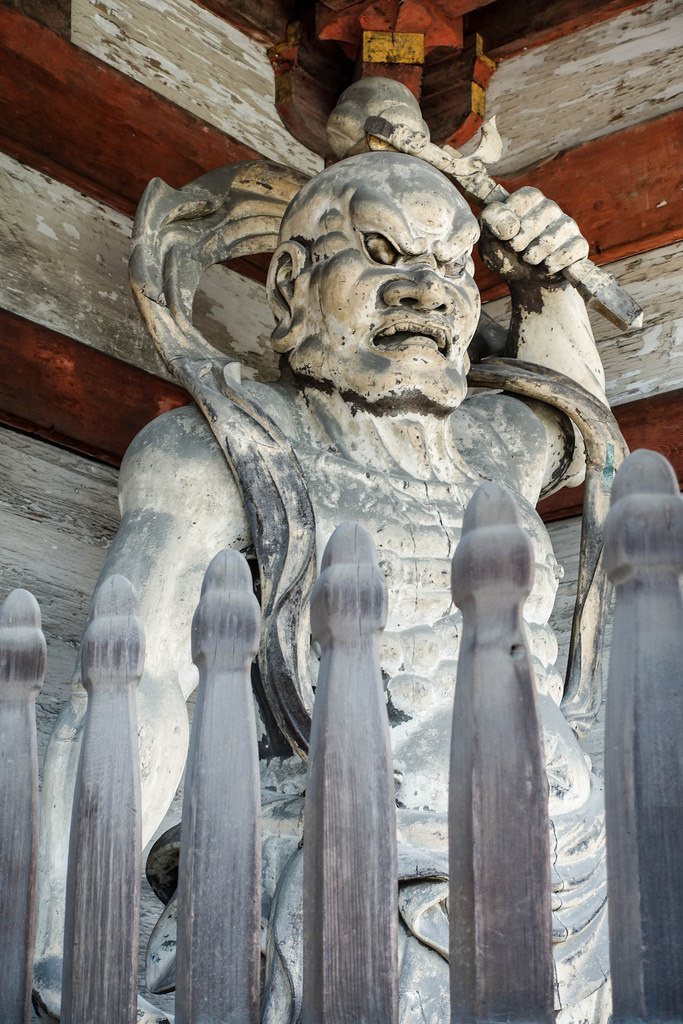
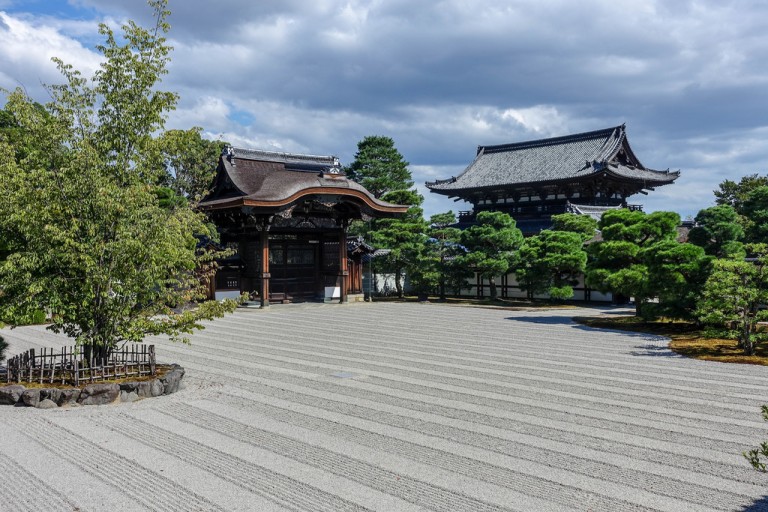
Ninna-ji is particularly popular in the spring thanks to its collection of cherry trees, or “sakura”, that are part of a particular sub-variety that make them the last to bloom in Kyoto.
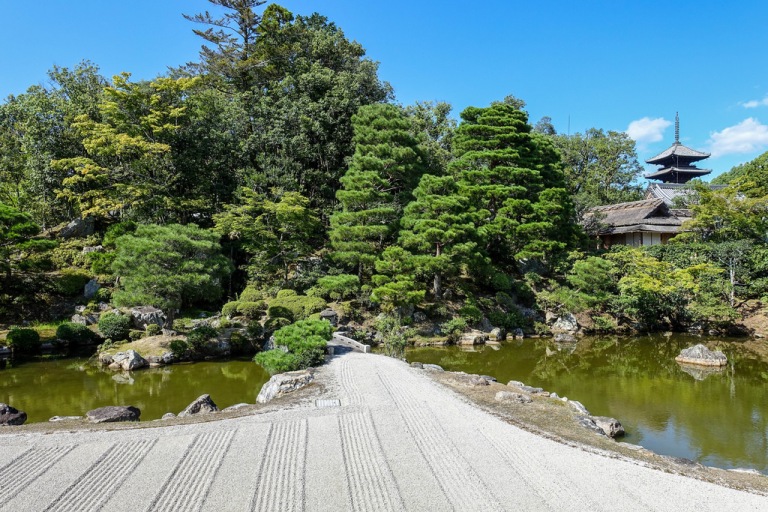
The temple was founded by Emperor Uda who retired here and assumed the post of the first abbot. The residence where he and his successors lived, the Omuro Palace, is styled in the manner of a villa.
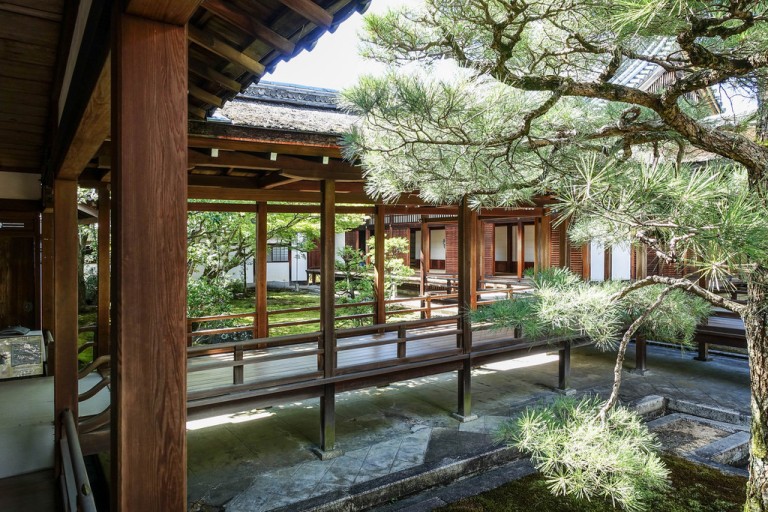
The Shinden is made from Japanese cypress wood and comprises three rooms in a line separated by painted sliding walls.
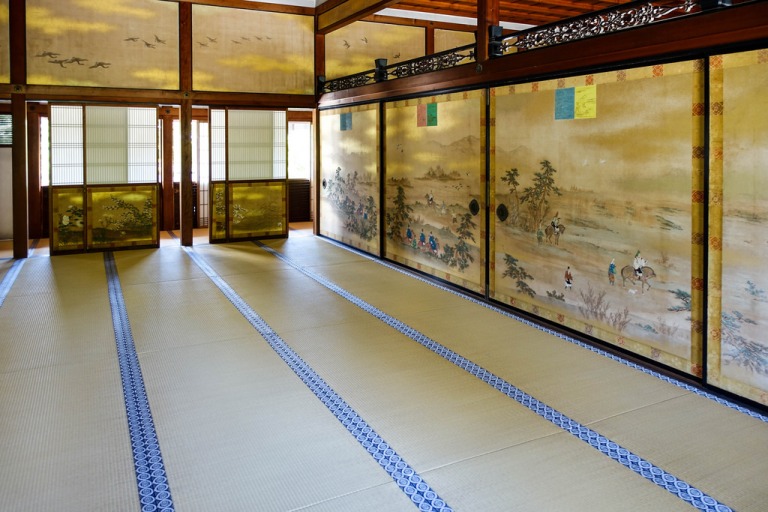

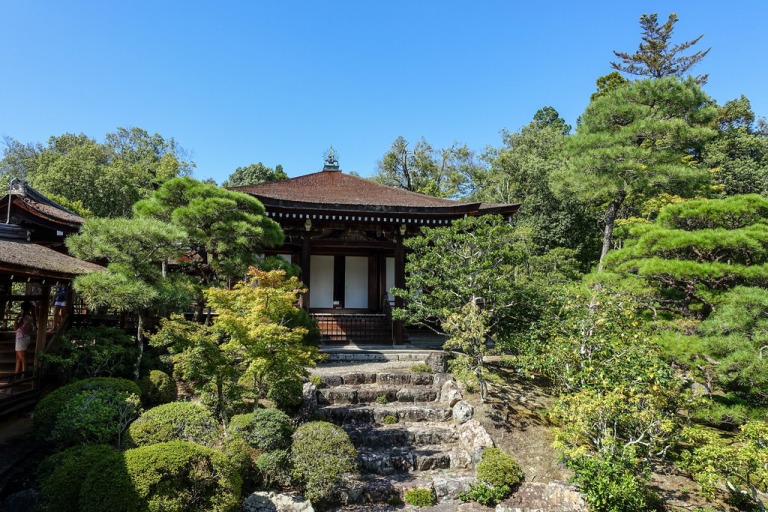
The roof is made of thatched split cedar shingles, in a style known as hiwadabuki, that needs to be completely replaced every thirty years.
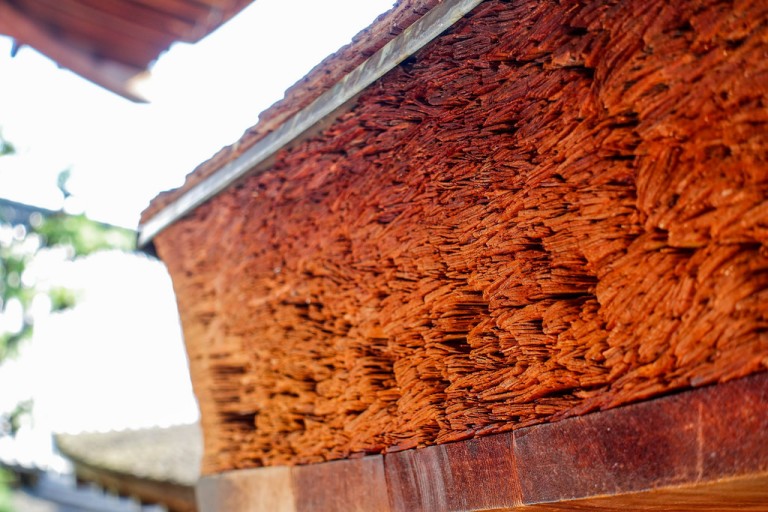
The Reimei-Den is the Buddhist reliquary in the compound. In the centre is a 10.7cm tall seated statue of Yakishi-Nyorai (the buddha of medicine and healing) that’s designated an Important Cultural Property and a National Treasure.
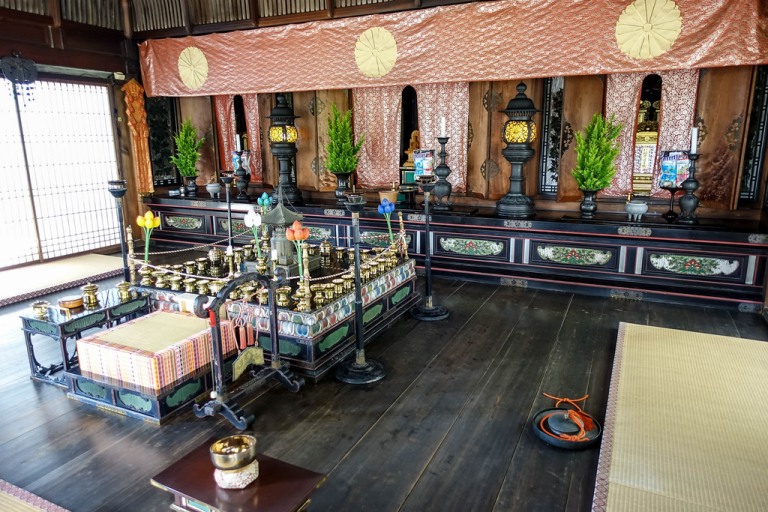
The five-story Pagoda was built in 1637 and is 36 metres . It’s constructed in a way that there should be no perceptible difference in width between the upper and lower levels.


See part 2 for more.
